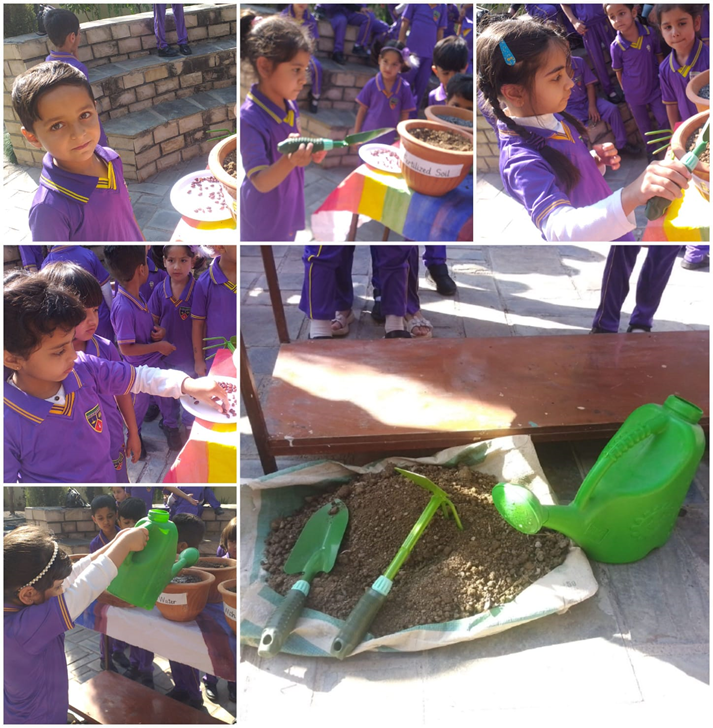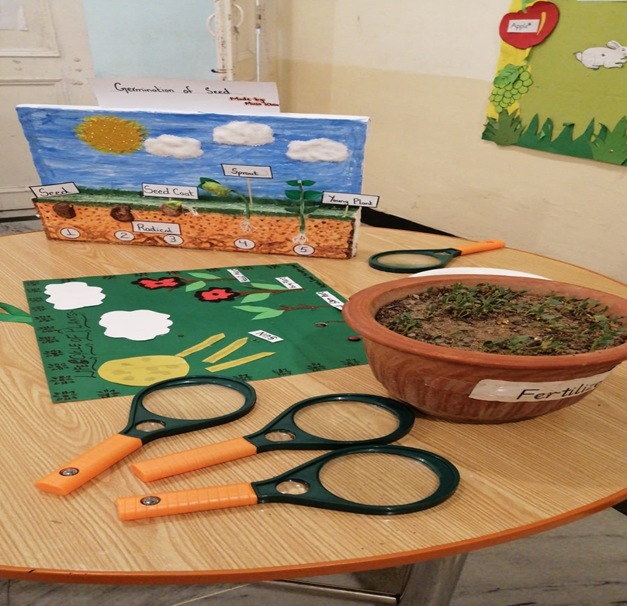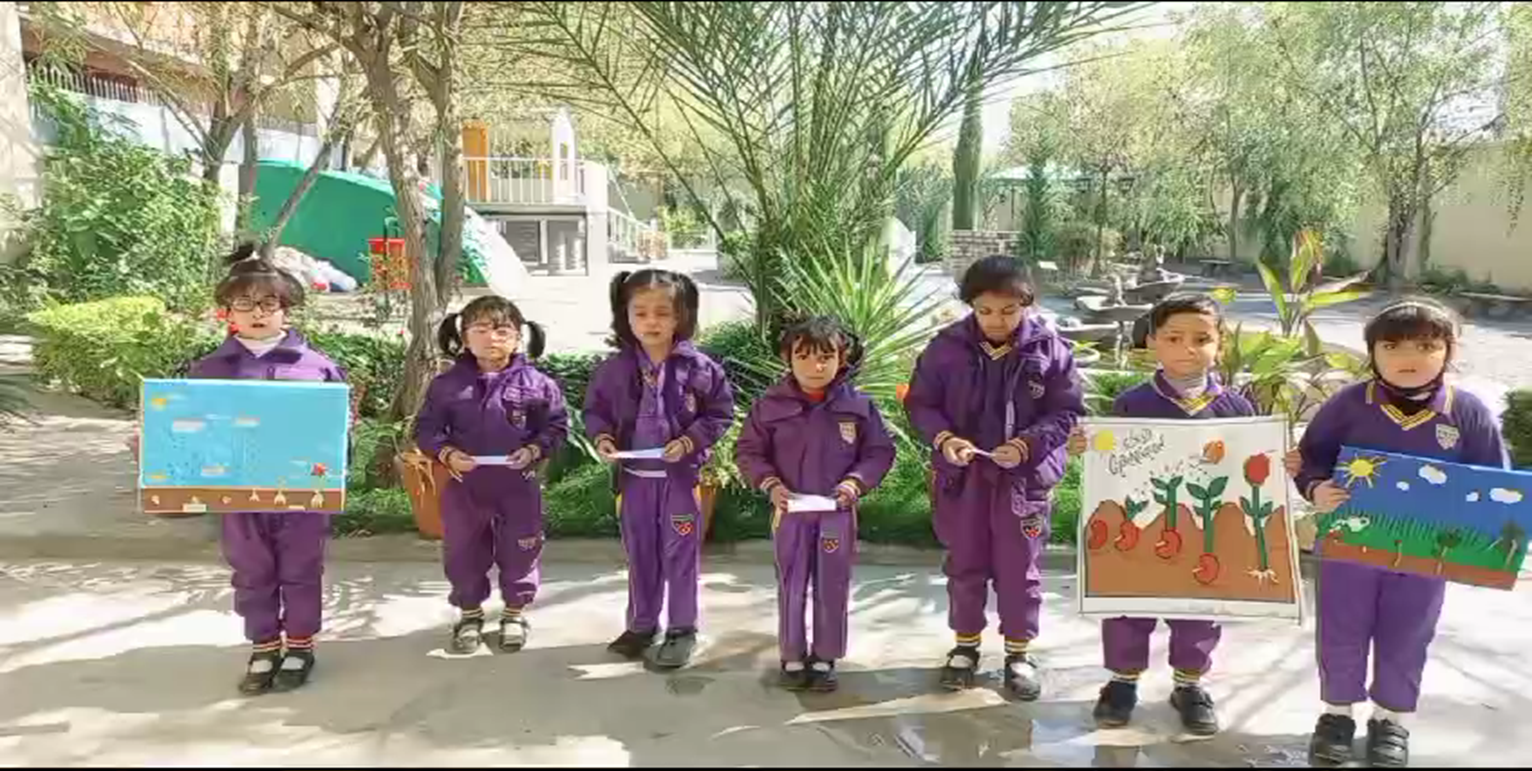Topic: Germination of Fenugreek seed under favorable Conditions:
Modernage Sapling Campus
Nursery Class (Pearl, Diamond, Opal, Emerald)
Research Incharge: Ms Ayesha Hina
Co-reserchers: Ms Shaista Jamil, Ms Zarnaz, Ms Momina
The primary objective of this study is to investigate the germination
process of plants under favorable conditions, including air, water,
sunlight,and soil.
b.
To
understand the stages of germination.
Null Hypothesis (H0): Favorable conditions do not significantly
impact the germination rate of plants.
Alternative Hypothesis (H1): Favorable conditions significantly
impact the germination rate of plants.
Experimental Design:
Selection of Plant Species: Fenugreek seed was selected for
consistent results.
Experimental Groups: Divided the seeds into several groups to
test
different conditions (air, water, sunlight, soil).
Variables:
Independent Variables: Air, water, sunlight, soil conditions.Experimental Procedure:
Materials required:
Fenugreek seeds
Flower pots (8)
Fertilized soil
Unfertilized soil
Plastic wrap
Labels and marker
Gardening tools (shovel, watering can, spade, gardening fork)
Procedure:
Preparation of Planting Pots:
Eight pots were prepared with four favorable and
four unfavorable
conditions:
1. Pot with fertilized soil:
a. Planting pot was filled with fertilized soil, leaving about
an
inch from the top.
b. Water was sprayed on the soil until it was evenly
moisturized
but not waterlogged.
2. Pot with unfertilized soil:
Seeds were planted in a pot that was with unfertilized soil.
3. Pot with water:
Pot was water regularly to keep the soil moist.
4. Pot without water:
One pot was left without watering.
5. Pot with sunlight:
Placed the pot in sunlight.
6. Pot without sunlight:
One pot was placed in a dark room where there was no sunlight.
7. Pot with air:
Pot was placed in an open air.
8. Pot without air:
One pot was covered with plastic wrap to avoid the passage of air.
Planting Fenugreek Seeds:
a. fenugreek seeds were placed on the surface of the soil in each
pot.
b. the seeds were gently pressed into the soil using shovel, ensuring good
seed-to-soil contact.
c. Lightly covered the seeds with a thin layer of soil using trowel.
Observed the pots after every two to three days.
Observations and Recordings:
All the planted pots were observed regularly and students
recorded the seed growth in
observation sheet.
b.
Students
noticed the stages of germination through magnifying glass.
c. Students observed and recorded the time duration of germination
and the appearance of
the seedlings.
d. Students drew different stages of germination while observing.
Students explained different stages of germination through
pictorial booklet.
f.
Students
presented projects of germination and explained them.
Data Collection:
a. Observations were recorded after two to three days for a
predetermined period, typically 2-4
weeks.
b.
Seed
growth was recorded during germination in each condition.
c. Observation sheet was filled by drawing different stages of seed growth.
d. Dates and observations of seed growth were recorded in
observation sheet.
e.
Each
stage of seed was preserved and explained in the booklet.
Conclusion:
Results were analyzed through the observation sheet, time duration
of germination, and overall growth of the fenugreek seedlings.
Effect of air, water, sunlight, and soil on fenugreek seed were
noticed through observation sheet. Whereas, pots without air,
without water, without sunlight, and unfertilized
soil didn’t show seed growth.
It is concluded that favorable conditions i.e air, water, sunlight, soil have a significant impact on the germination rate.























.jpeg)

.jpeg)


























